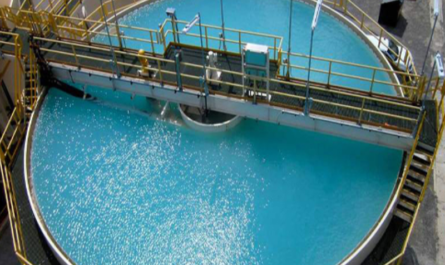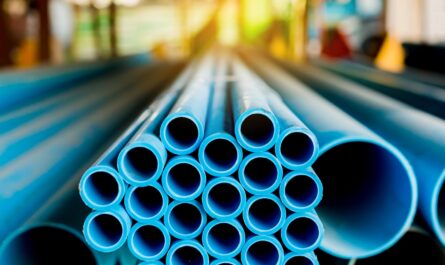Cross linked polyethylene (XLPE) is a special type of polyethylene which has been chemically crossed linked using ionizing radiation or a chemical additive. Cross linking substantially improves polyethylene’s heat resistance and reduces the tendency of the material to melt or deform at high temperatures. Due to these enhanced properties, XLPE has become a popular material for many industrial and commercial applications.
What is Cross Linking?
To understand XLPE, we must first understand the cross linking process. Polyethylene is comprised of long molecular chains. When these chains are cross linked, it involves chemically bonding one molecular chain to another, forming bridges between the chains. This bonding restricts the movement of molecular chains and makes the material more rigid. Cross linking is done by inserting chemical additives into the polyethylene matrix during manufacturing or by exposing the material to ionizing radiation. The radiation or additives cause chemical reactions between the molecular chains that result in bonding bridges between them. This brings about enhanced properties compared to normal polyethylene.
Chemical vs Radiation Cross Linking
There are two main methods for cross linking polyethylene – using a chemical additive or ionizing radiation.
Chemical cross linking involves mixing the polyethylene resin with organic peroxides before the extrusion process. The additive interferes with polymerization and produces free radicals along the chains during manufacturing. These radicals bond together to form cross links. Although effective, using a chemical additive presents some disadvantages like requiring precise control of cross linking dosage and leaving minor chemical residues.
Radiation cross linking is a cleaner process that exposes the polyethylene to bombarding gamma rays or electron beams after production. The energy from radiation excites the polyethylene molecules and generates free radicals within the material microstructure. As these radicals recombine randomly, they create three dimensional cross linking between chains without any chemical contamination. Radiation cross linking offers benefits like uniform cross linking throughout the material thickness. However, it requires specialized processing infrastructure.
Applications of XLPE
Due to its enhanced thermal and mechanical properties compared to normal polyethylene, XLPE finds wide usage across many industries:
– Power Cables: As an insulation material for medium and high voltage power cables, XLPE offers excellent dielectric properties and heat resistance over longer distances. It has largely replaced oil filled cables.
– Pipe Systems: Cross linked polyethylene pipes are used extensively for potable water distribution and sewage systems due to their resistance to chemicals, pressure and impact.
– Wire and Cable Jacketing: The enhanced durability of XLPE makes it suitable as protective jacketing over communication and control wiring that needs to withstand exposure and hazards.
– Geomembranes: Thin continuous XLPE sheets are used as impermeable membranes in landfills, reservoir lining and other geotechnical applications that demand high puncture and tear resistance.
– Automotive: Various auto components like dashboards, door panels and under-hood components employ XLPE for its heat deflection properties and energy absorption ability.
– 3D Printing Filament: Some 3D printer manufacturers use radiation cross linked polyethylene filament that prints parts with greater impact strength and tolerance to high temperatures.
Advantages of XLPE
From the discussion so far, some of the key benefits offered by XLPE due to cross linking include:
– Improved Heat Resistance: The ability of molecular chains to move and deform is restricted due to cross linking bonds. This significantly increases the material’s softening point and heat deflection temperature.
– Enhanced Mechanical Properties: Factors like tensile strength, impact toughness and resistance to cracks are far greater in XLPE compared to normal polyethylene due to its rigid structure.
– Chemical Resistance: Cross linking yields a structure that is more inert to chemicals like acids, alkalis and petroleum products compared to linear polyethylene.
– Long Service Lifetime: Features like resistance to cracking, stress cracking and material failure enable XLPE to maintain integrity and performance over prolonged usage periods.
– Uniform Properties: Radiation cross linking cross links the material evenly throughout its mass, providing homogenous characteristics unlike residual localization from chemical additives.
– Cost Effectiveness: While the cross linking process demands more processing than normal polyethylene, the enhanced service life of XLPE outweighs initial costs, making it economical in the long run.
Emerging Trends in XLPE Technology
Continuous research and development is expanding the envelope of XLPE applications:
– Nano Composites: Reinforcing XLPE with nanoparticles like silica and clay creates high performance hybrids with far better strength, barrier properties and flame resistance. Such nano XLPE is finding adoption in electronics components.
– Cross Linking Degree Control: Techniques to control the cross link density in different sections of the material enable tailoring properties like hardness, elongation and density. This could optimize XLPE for complex product designs.
– Radiation Curing: Using UV or EB radiation instead of heat or moisture allows for faster cross linking reactions and innovative curing techniques like inkjet printing of 3D structures with tailored cross linking patterns.
– New Chemistries: Exploring alternate cross linking systems beyond traditional organic peroxides and creating hybrid systems combining chemical and radiation methods can further broaden XLPE capabilities.
As research expands our control over polyethylene cross linking, XLPE will continue evolving to meet the thermal, mechanical and chemical demands of developing technologies and infrastructure. Its outstanding longevity, versatility and performance economics ensure its critical role in materials selection.



